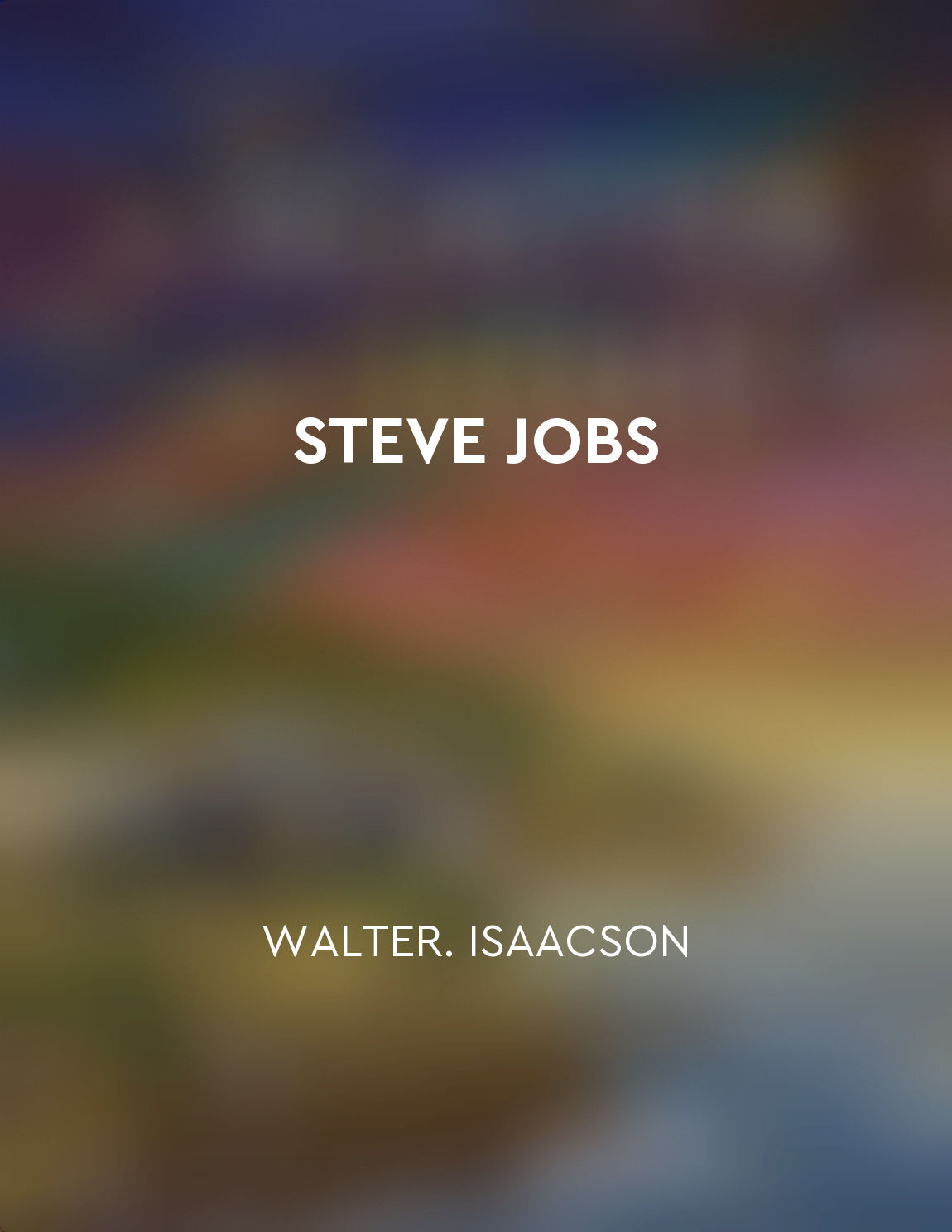Jobs returns to Apple from "summary" of Fire in the Valley by Paul Freiberger,Michael Swaine
In 1996, Apple was in dire straits. The company had lost its way, with declining sales and a lack of innovation. The board of directors knew something drastic had to be done. That's when Steve Jobs re-entered the picture. Jobs, who had been forced out of Apple a decade earlier, was now at the helm of NeXT, a company he founded after leaving Apple. NeXT had developed cutting-edge technology, including a powerful operating system called NeXTSTEP. Apple was in need of a new operating system, and NeXTSTEP seemed like the perfect solution. After much negotiation, Apple acquired NeXT in a deal worth over $400 million. This acquisition brought Jobs back to Apple as an advisor, but it wasn't long before he was once again in charge. Jobs wasted no time in shaking things up at Apple. He quickly identified areas where the company needed to change, from product design to corporate culture. He brought in a new team of executives and set about reinvigorating Apple's product line. Under Jobs' leadership, Apple underwent a dramatic transformation. The company released a series of innovative products, including the iMac, iPod, iPhone, and iPad. These products not only revolutionized their respective industries but also propelled Apple to new heights of success. Jobs' return to Apple marked a turning point for the company. His vision, creativity, and drive were instrumental in Apple's resurgence. Jobs' second act at Apple was nothing short of a triumph, and his impact on the company continues to be felt to this day.Similar Posts

Childhood influences shaped Steve Jobs' personality and entrepreneurial spirit
From an early age, Steve Jobs was exposed to a unique blend of influences that would ultimately shape his personality and entre...
Forward thinking is key
The ability to think ahead is a vital skill in today's fast-paced world. It is no longer sufficient to simply react to events a...

The impact of globalization on manufacturing cannot be understated
Globalization has transformed the world of manufacturing in ways that were previously unimaginable. The interconnectedness of e...

People don't buy what you do
The concept that people don't buy what you do is a critical one to understand when it comes to inspiring loyalty and trust from...
Conflict resolution addresses disputes effectively
Conflict resolution is a crucial aspect of running a successful business. It involves dealing with disputes and disagreements i...

Innovations reshaped the fabric of society
The story of human progress is a tapestry woven with threads of innovation. From the wheel to the steam engine, from the teleph...

Tesla faced numerous challenges in its early years
In the early days of Tesla, the company encountered a multitude of obstacles. Financial problems loomed large, with Musk having...
Being paranoid is necessary for survival in a competitive market
In a competitive market, the difference between success and failure can often come down to a company's ability to stay ahead of...
Bezos acquired The Washington Post in 2013
In 2013, Bezos made a surprising move when he acquired The Washington Post. The newspaper, founded in 1877, had been struggling...
Companies fail by ignoring disruptive threats
Disruptive threats are often overlooked by companies as they focus on serving their existing customers and improving their curr...
